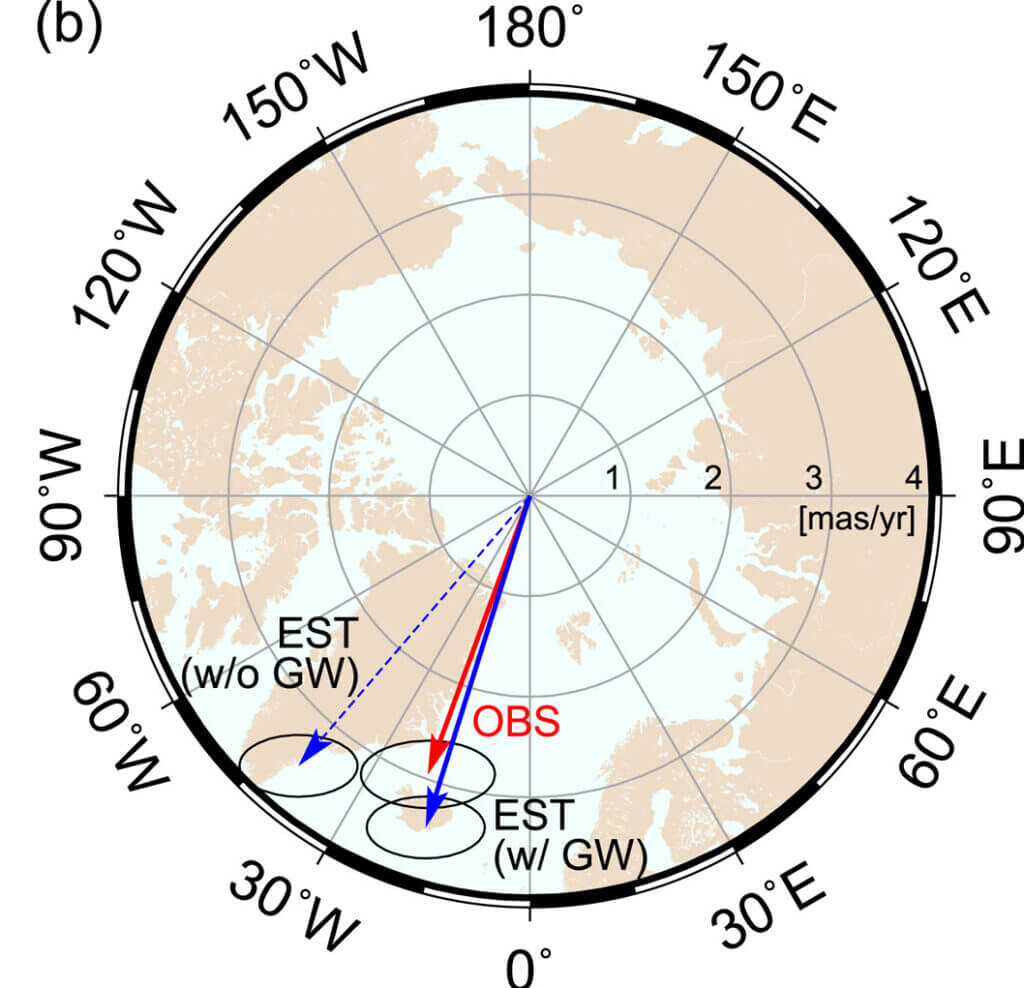WASHINGTON — You may not notice it, but the planet you’re standing on is actually tilting a lot more than it used to. A new study finds that humans have pumped so much water out of the ground that it’s shifting Earth’s spin by nearly three feet. From 1993 to 2010 alone, scientists with the American Geophysical Union found that Earth is tilting over 31 inches more to the east because of the amount of groundwater people are moving to other places.
Think of the Earth like a small boat in the ocean. If all the passengers move to one side, you’ll see the ship dip into the water because of the extreme shift in weight. On a global scale, researchers estimate that humans have pumped 2,150 gigatons of groundwater between 1993 and 2010 — the equivalent of a quarter-inch of sea level rise. However, the team notes that pinpointing the exact amount of groundwater shifting is hard to do.
One method involves looking at the Earth’s rotational pole. This is the point around which our planet rotates. Earth’s rotational pole moves during a process called polar motion, which takes place when the pole shifts in relation to the planet’s crust. Scientists have recently discovered that the distribution of water all around our planet affects that spin — just like the passengers moving in a tiny boat. In Earth’s case, adding more water to one side of the planet makes Earth spin differently.
“Earth’s rotational pole actually changes a lot,” says study leader Ki-Weon Seo, a geophysicist at Seoul National University, in a media release. “Our study shows that among climate-related causes, the redistribution of groundwater actually has the largest impact on the drift of the rotational pole.”

Scientists discovered water’s power to change Earth’s spin in 2016
The new study modeled observed changes in the drift of Earth’s rotational pole, comparing it to the movement of water around the world. These models first looked at only the planet’s ice sheets and glaciers, before adding in other factors such as groundwater redistribution.
The models only matched what scientists have been seeing when the team accounted for the 2,150 gigatons of groundwater humans have relocated in recent years. Without that water, the models were off by roughly 31 inches, or 1.7 inches of drift per year.
“I’m very glad to find the unexplained cause of the rotation pole drift,” Seo says. “On the other hand, as a resident of Earth and a father, I’m concerned and surprised to see that pumping groundwater is another source of sea-level rise.”
The United States and India are contributing a lot to this shift
Study authors note that the location people take groundwater from can have a major impact on changing polar drift. Specifically, moving groundwater from the midlatitudes — areas lying between 35 and 55 degrees north or south of the equator — has a bigger impact on shifting the spin of the planet. The study discovered that most of the water being redistributed was in western North America and northwestern India, both at midlatitudes.
Even if countries slow their groundwater depletion rates, Seo adds that it would take decades of continuous effort to theoretically alter the change in drift. On a positive note, the researchers says that the rotational pole normally shifts by several meters each year, so groundwater pumping probably won’t cause the seasons to shift right now. However, Surendra Adhikari, a research scientist at the Jet Propulsion Laboratory who was not a part of this study, warns that polar drift could impact the Earth’s climate over the long haul.
Next, the team plans to look at how these shifts have affected Earth in the past.
“Observing changes in Earth’s rotational pole is useful for understanding continent-scale water storage variations,” Seo concludes. “Polar motion data are available from as early as the late 19th century. So, we can potentially use those data to understand continental water storage variations during the last 100 years. Were there any hydrological regime changes resulting from the warming climate? Polar motion could hold the answer.”
The findings are published in the journal Geophysical Research Letters.
You might also be interested in:
- Intelligent aliens are most likely living on planets with an Earth-like tilt
- The Sun may be the surprising source of water on Earth

